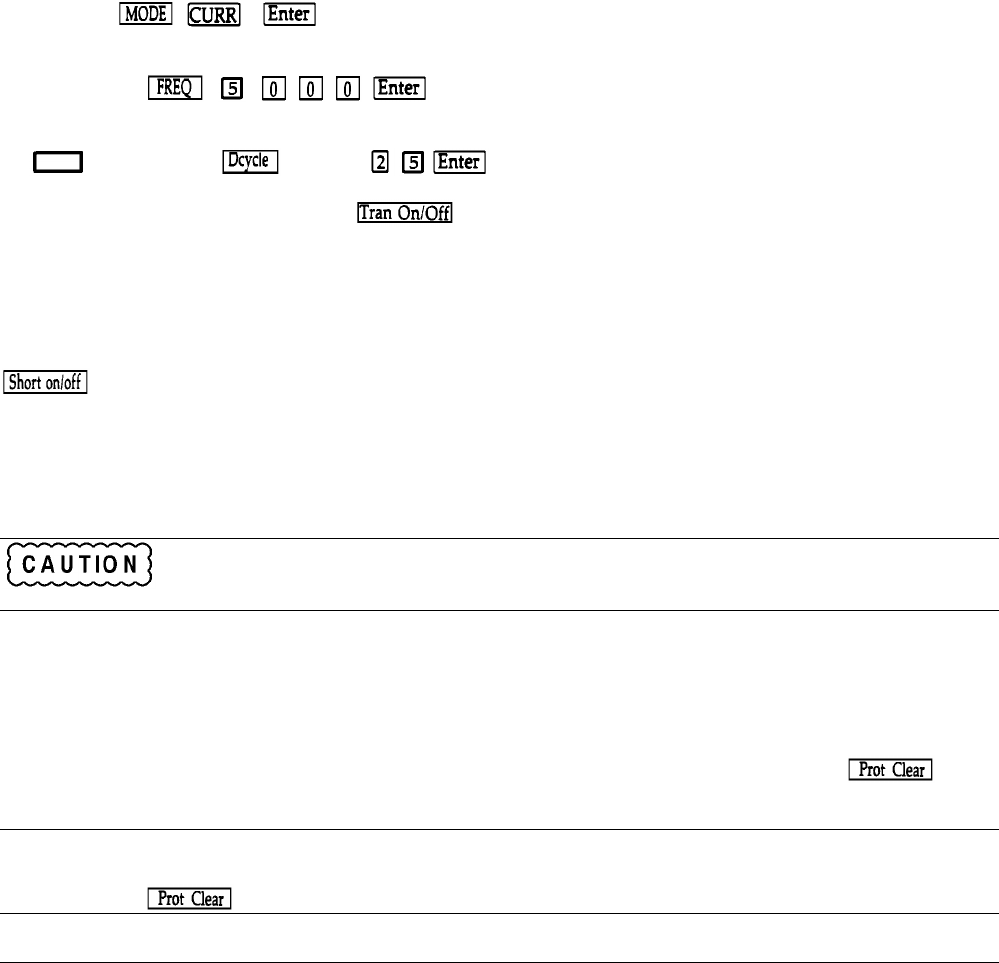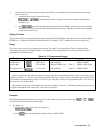
Local Operation 61
a. Set the main CC level to 0.5 amps, the transient CC level to 1 amp, and the slew rate to 0. 0025 A/
µ
s. See
examples under Setting CC Values.
b. Turn on CC mode by pressing:
2. Set frequency to 5 kHz by pressing:
3. Set duty cycle to 25% by pressing:
(blue shift key) (shifted)
4. Turn on transient operation by pressing:
5. Note that the Tran annunciator is on.
Shorting The Input
The Electronic Load can simulate a short circuit across its input. The short circuit can be toggled on/off by pressing
.
When the input is shorted the message "SHORT ON" win be displayed. The short on/off change uses the slew rate setting
of the active mode and range. Turning the short off returns the input to the previously programmed values and returns the
display to the metering mode. Note that "INPUT OFF" takes precedence over "SHORT ON".
Pressing the Short on/off key with certain user applications may cause damage to the equipment being
tested, which may result in personal injury. Contact your Agilent Sales and Service office if you need
to have the Short on/off key disabled.
Resetting Latched Protection
The Electronic Load includes overvoltage "OV", overpower "OP", and overtemperature "OT" protection features as well as
a software overcurrent limit protection feature (remotely programmable only) that latch when they are tripped. The
protection shutdown "PS" and voltage fault "VF" conditions also latch when tripped. The Prot annunciator on the front
panel goes on when any of the above features are tripped. To reset any of these protection features, press
.
Note The condition that caused the protection feature to trip must be removed or it will trip again as soon as it
is reset. Also, if OT occurs, the Electronic Load must have sufficiently cooled down in order for the
to take effect.
Using The System Keys
These keys consist of Local, Address, Error (shifted Address key), Recall, Save (shifted Recall key), and the blue shift key.
The Local key and the Shift key have already been discussed. The remaining SYSTEM keys are described in the following
paragraphs.


















